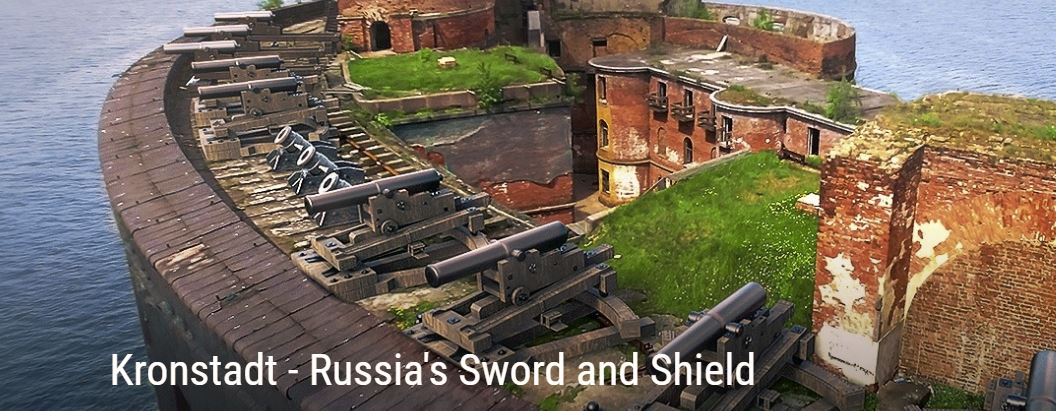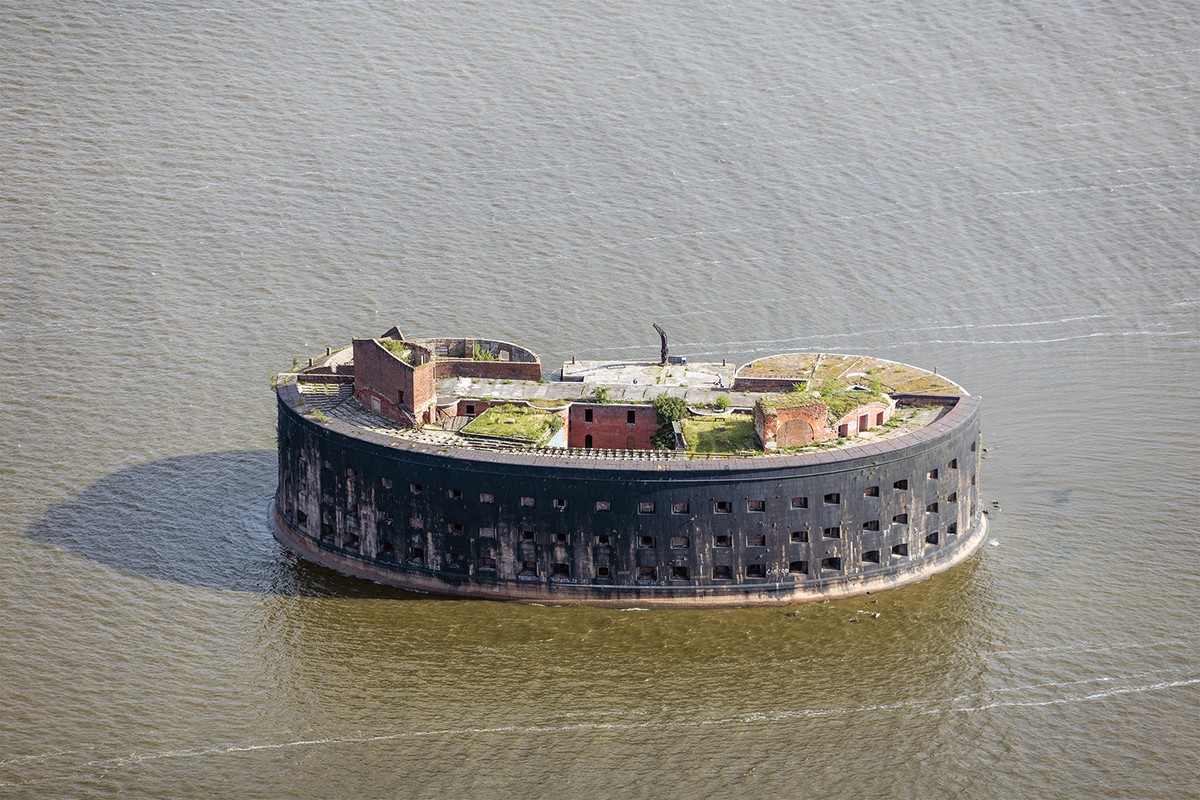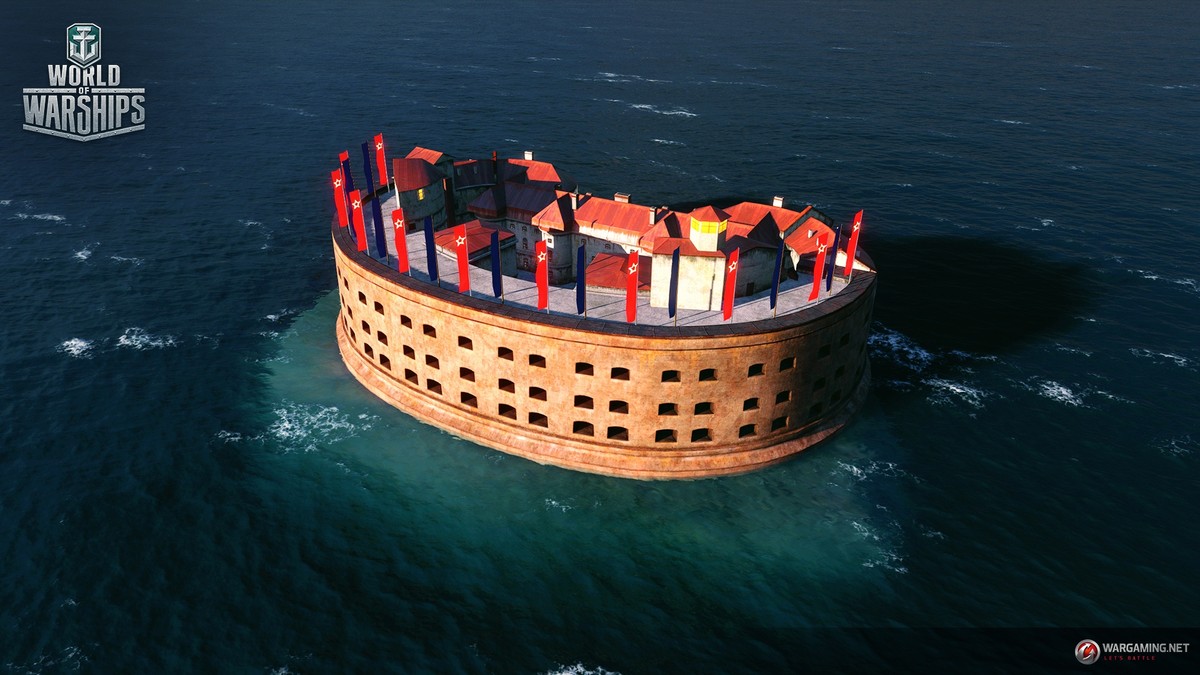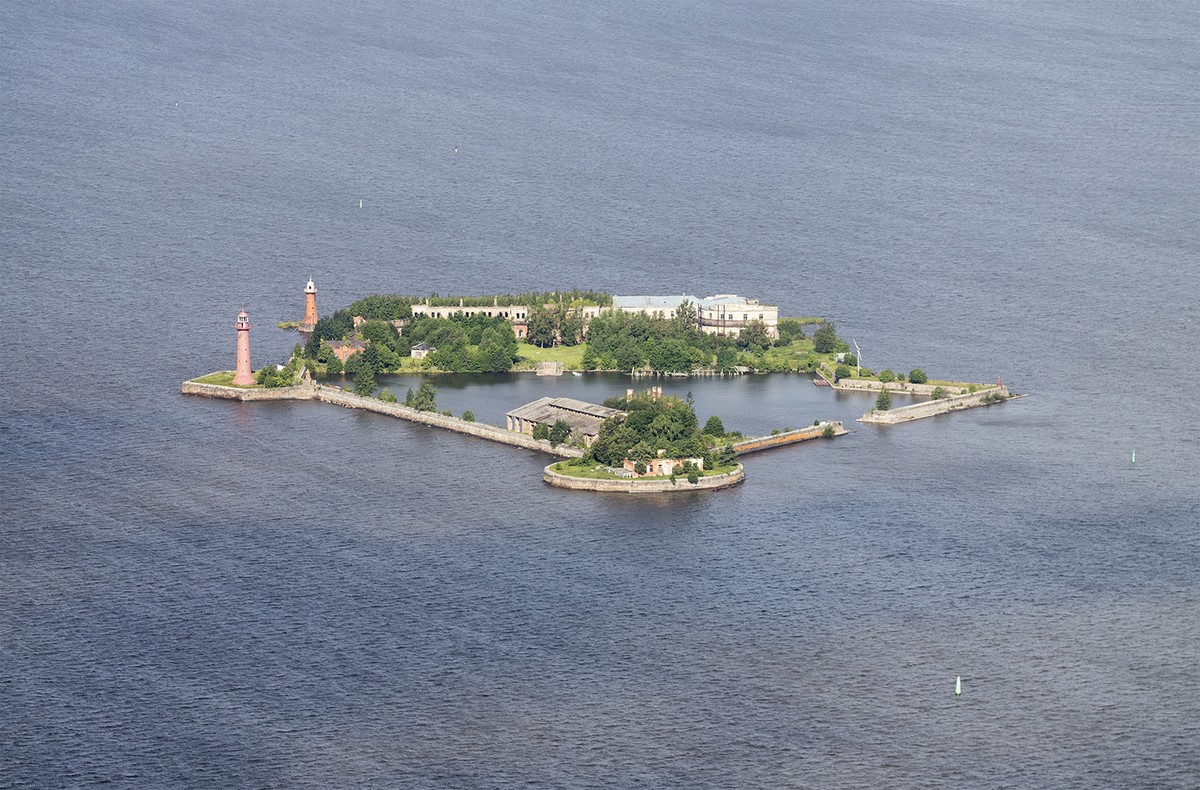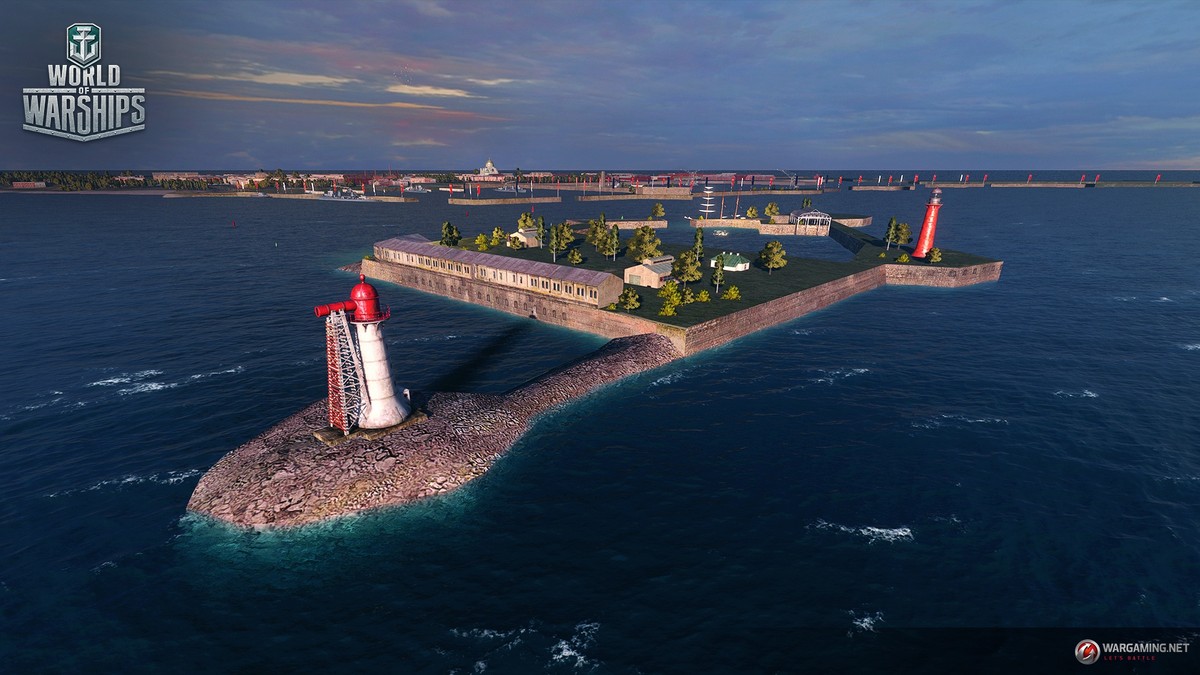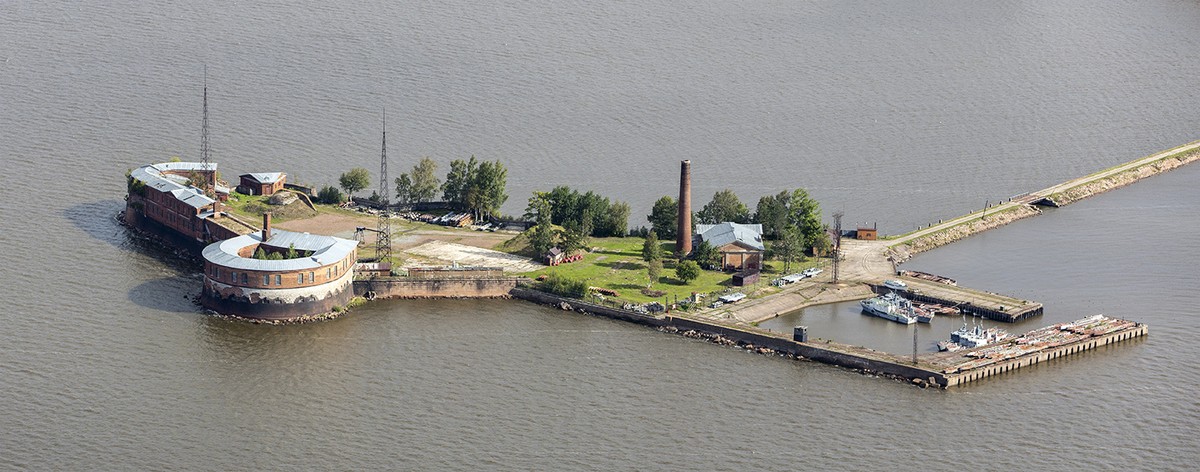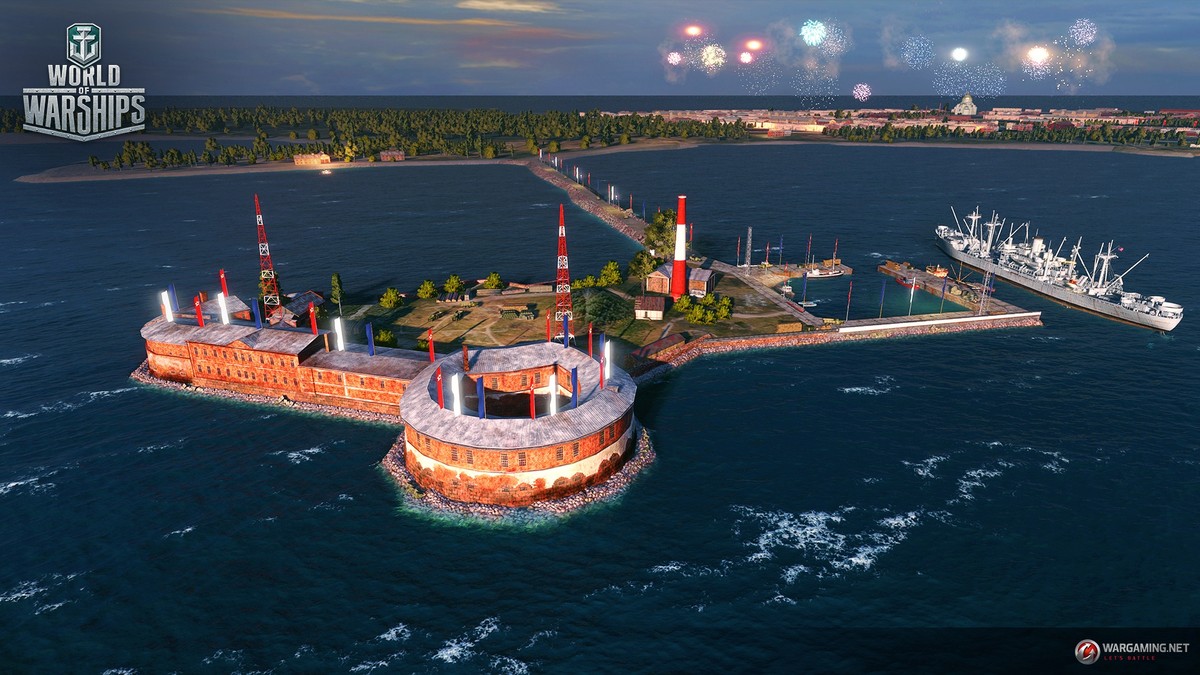Introduction
The roar of sirens from a wing of Ju 87 ‘Stuka’ dive bombers rips through the frigid air hundreds of meters above the calm waters of the Gulf of Finland as the thundering clap from a swarm of ground and ship-based anti-aircraft batteries progressively increases, as if competing with the aeroplanes in a childish shouting match. Soviet Battleship Marat lies dead in the middle of the bombing sights of Hans-Ulrich Rudel’s aircraft. Helplessly sitting in her mooring, the ship’s crew desperately try to keep their guns trained on the incoming squadron.
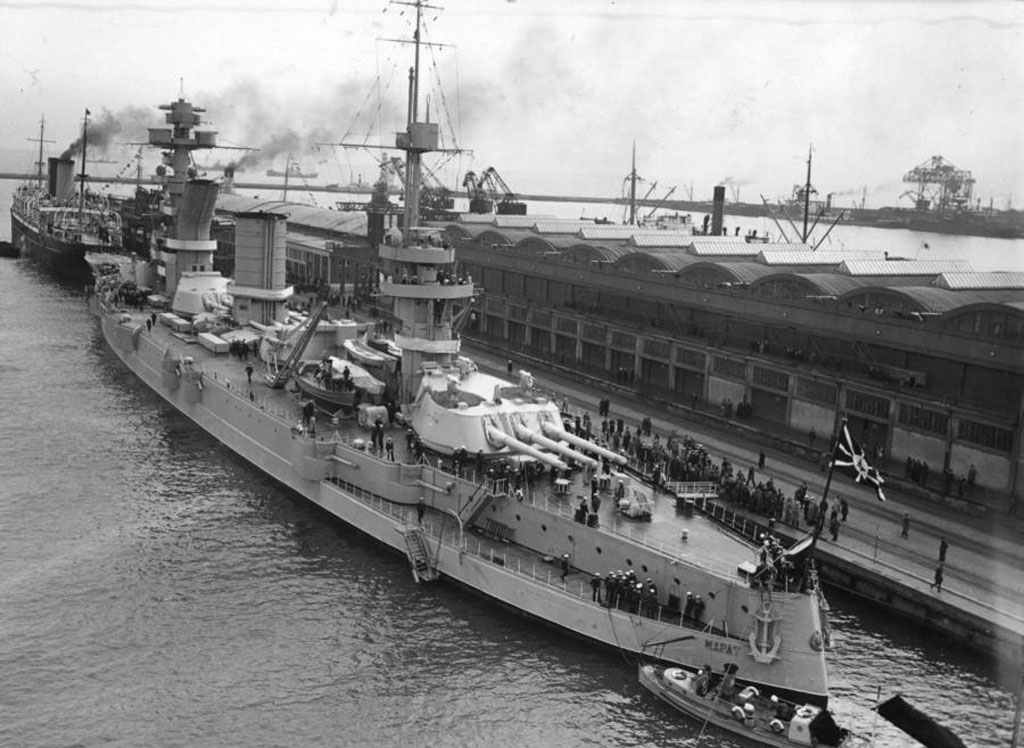
Battleship Marat
The ship’s guns had been consistently bombarding the positions of the German military outside of Leningrad, circumstance which gave the young German pilot the zealous moral objective of assisting his comrades on the ground in the best way he could. A single 1,000-kilogram bomb releases from the underbelly of the warplane and plunges toward the Soviet dreadnought below. With a reverberating crash, the German ordnance strikes her forward magazine, causing a crippling detonation and leaving the titanic battleship at the bottom of the 10-meter deep bay.
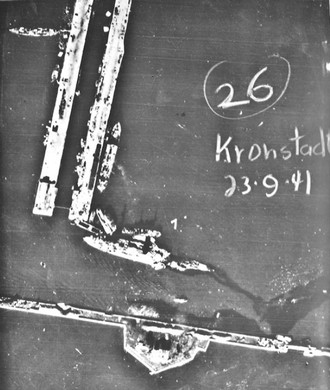
Damaged Marat
This was one of several aerial attacks carried out by the Luftwaffe on the Naval city of Kronstadt. Berlin knew all too well of its importance, for Leningrad (Now Saint Petersburg), the most important industrial centre and culturally symbolic city in Russia, was coming closer and closer to complete encirclement by the German army. The Soviet military command had made a strong effort to fortify this bastion of last resort after the German war machine had advanced at a frightening speed and with devastating efficiency through the Eastern front in the early stages of the war. The bulk of the Soviet Baltic Fleet had to be relocated to the comforting and dissuasive defences of port Kronstadt as part of this desperate attempt to consolidate and grasp victory in a long, drawn-out engagement.
Kotlin Island
The island of Kotlin, on which Kronstadt is situated, lay rather strategically right in the middle of Neva Bay, just over twenty kilometres from the Leningrad waterfront. The privileged overview of the bay provided by the island would inspire successive governments to fortify it and its surroundings so as to create an impenetrable barrier for hostile fleets wishing to descend on Saint Petersburg. This strategic value was certainly not lost on Czar Peter the Great when he captured the position from the Swedes in 1703 and promptly founded his new Capital nearby.
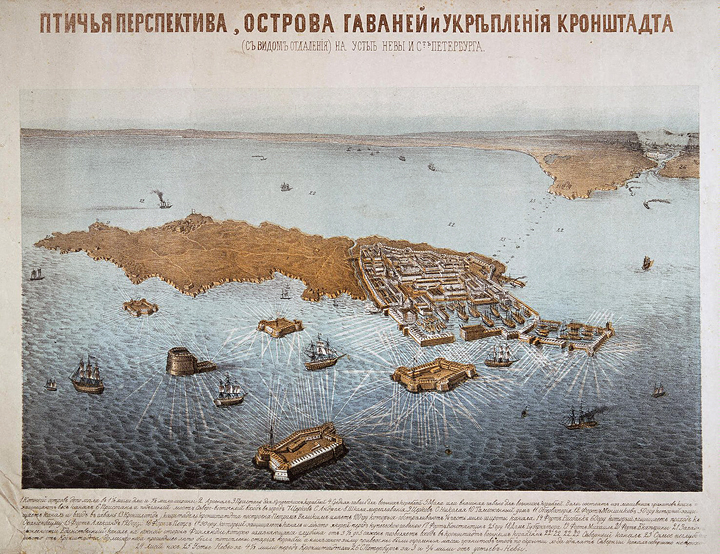
Kronstadt, 1855
In the following years, the Czars of the germinating Russian Empire would dedicate no small number of resources to the shoring up of this small island, with the first fort built in 1704. Shortly thereafter, resources and workforces from all over Russia, as well as architects and engineers from as far off as England and Italy would be invited to dig into the swampy earth to create a military port, and later a heavily defended city of brick and stone immersed in a network of canals.
This new imperial city would attract a wealth of enterprises, justifying its merchant port. Kronstadt would be the stage on which Alexander Stepanovich Popov would carry out his early trials on radio communication, and also the place where medical staff based at the anti-epidemiological laboratory at Fort Alexander would develop vaccines for the plague.
The military role would however always be the eminent occupation of the city. In 1783 after a disastrous fire at the Russian Admiralty in Saint Petersburg, Empress Catherine II transferred a range of competencies to Kronstadt, which would require further investments in military architecture and engineering. To this end, up to 17 forts were erected in its immediate surroundings and even the Naval Cathedral of Saint Nicholas, dedicated to the fallen sailors of the imperial navy.
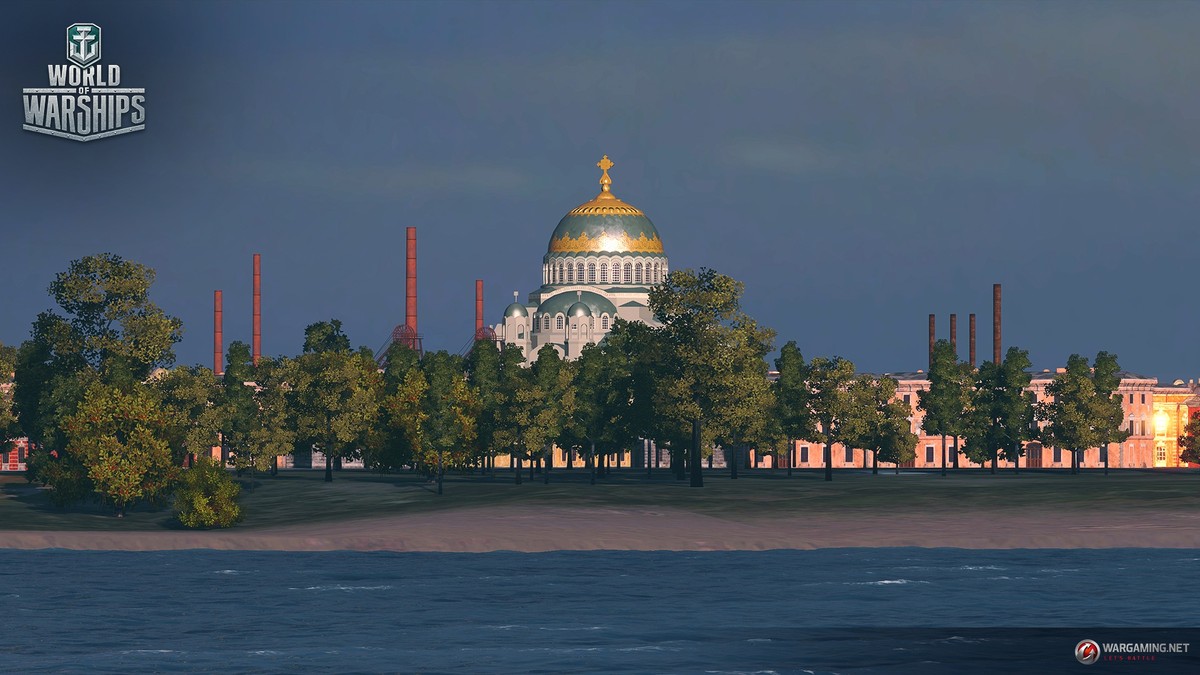
Saint Nicholas
The Forts
From an in-game standpoint, as we are calmly sitting in the port and enjoying the fireworks, we can see some of the most important fortifications of the city.
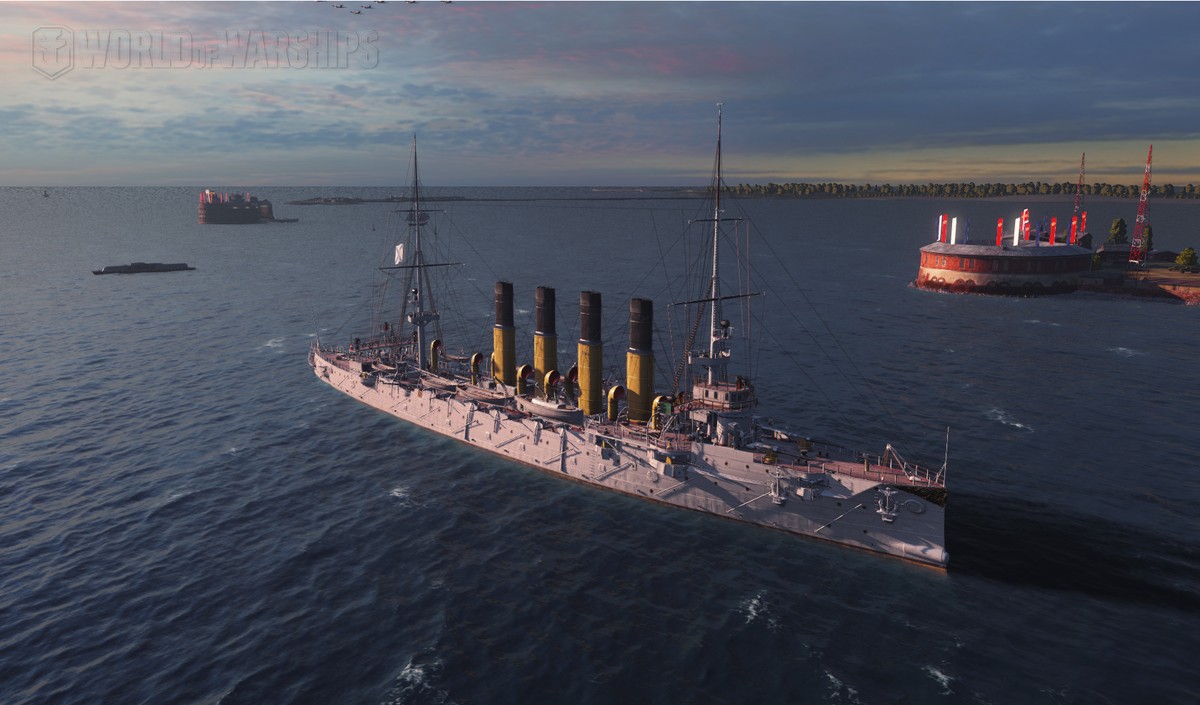
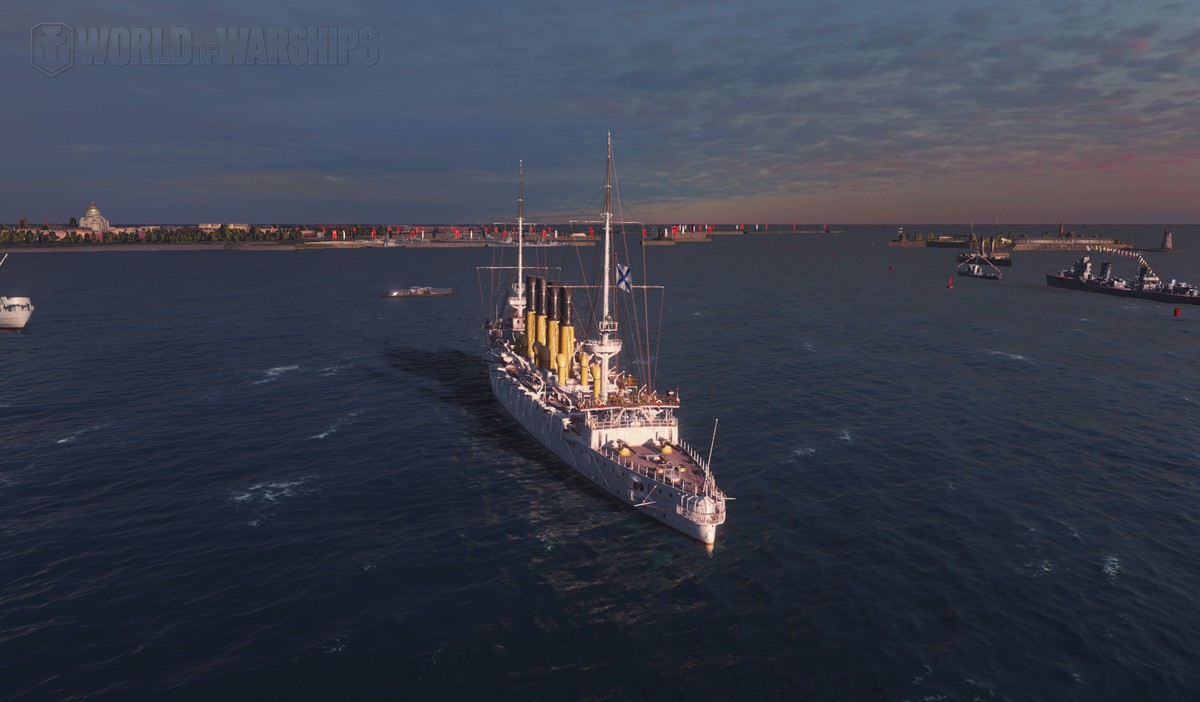
Knowing of the stalwart military background of Kronstadt, it’s no surprise that after her violent sinking, Battleship Marat was raised and filled with concrete to serve as a static battery position and continue making use of her 30-centimetre guns in the defence of Leningrad. In her new role as a fortified artillery emplacement, Marat truly honoured the defensive spirit of the legendary Russian naval city of Kronstadt.
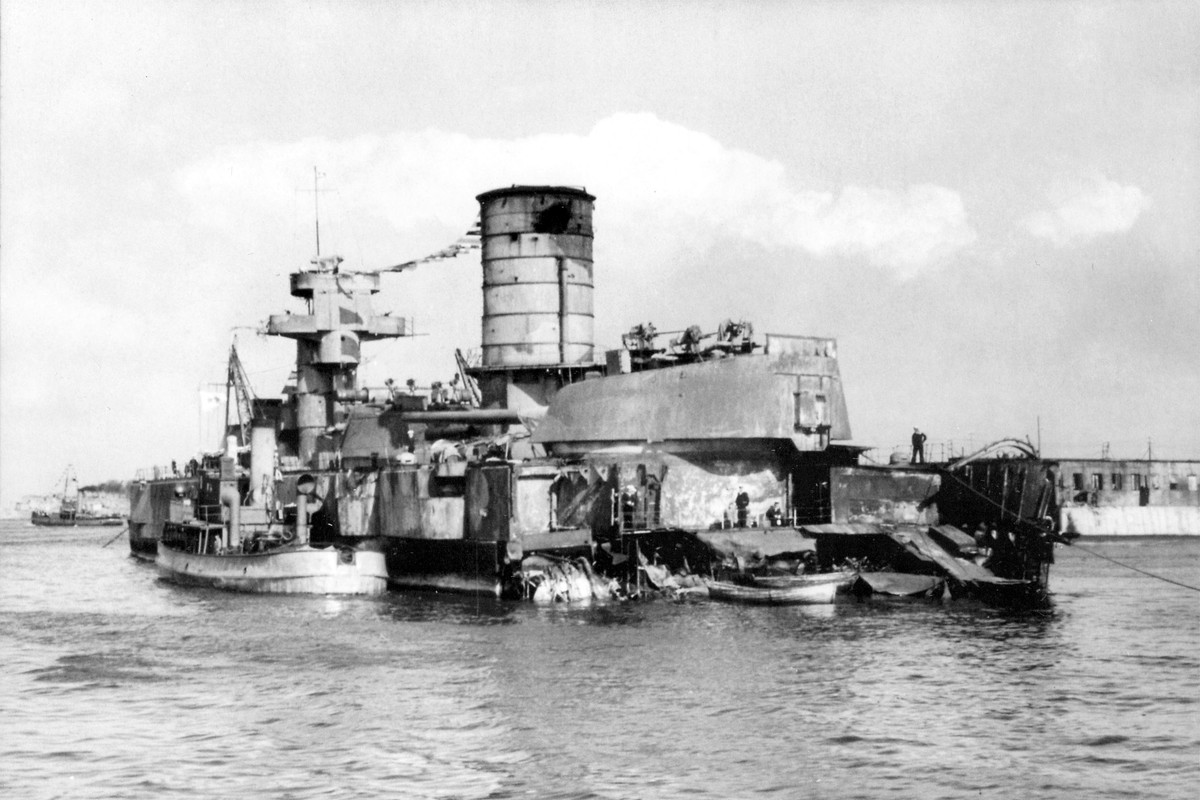
Marat refloated
Introduzione
Il fischio delle sirene sulle ali dei bombardieri Ju 87 “Stuka” risuona nell’aria gelida, centinaia di metri al di sopra delle calme acque del golfo di Finlandia, mentre cresce progressivamente il suono delle esplosioni provenienti dallo sciame di batterie contraeree installate sulle navi, in un infantile gara a chi fa più rumore. La corazzata sovietica Marat, al centro del mirino dell’aereo di Hans Ulrich Rudel, giace morta e senza più alcuna speranza nei suoi ormeggi. Il suo equipaggio cerca disperatamente di tenere le sue batterie contraeree puntate sugli aerei in arrivo.

I cannoni della nave hanno causato notevoli danni alle posizioni militari tedesche attorno a Leningrado, circostanza che ha motivato il giovane e zelante pilota tedesco. Sente la responsabilità morale di aiutare i suoi camerati al suolo nel migliore dei modi. Una sola bomba da 1.000 kg si stacca dalla pancia dell’aeroplano e colpisce la corazzata. L’impatto è potente, la bomba tedesca centra la cittadella di prua e scatena una rovinosa esplosione, mandando la titanica corazzata ad appoggiarsi sul fondale, sotto 10 metri d’acqua.
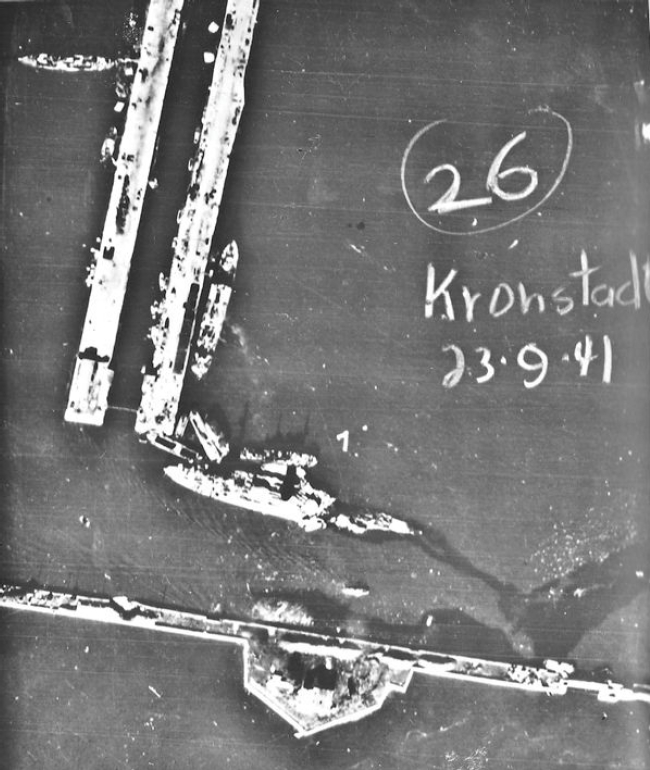
Questo fu uno dei svariati attacchi condotti dalla Luftwaffe sulla città navale di Kronstadt. Berlino era ben a conoscenza della sua importanza per Leningrado (ora San Pietroburgo), il più importante centro industriale sovietico e città simbolo della cultura russa, che stava per essere accerchiata dall’esercito tedesco. Il comando militare sovietico aveva compiuto grossi sforzi per fortificare questo bastione durante la rapida avanzata tedesca verso est, durante le fasi iniziali della guerra. Il grosso della flotta sovietica del baltico era stato riposizionato all’interno delle difese del porto di Kronstadt, come parte di questo disperato tentativo di consolidare le posizioni e cercare di battere i tedeschi in un confronto prolungato.
Isola di Kotlin
L’isola di Kotlin, su cui è posta Kronstadt, è situata strategicamente al centro della baia del Neva, a poco più di venti chilometri dalla costa di Leningrado. La vista privilegiata della baia data dall’isola fu d’ispirazione ai governi successivi per fortificare i suoi dintorni per creare una barriera impenetrabile contro le flotte ostili desiderose di arrivare a San Pietroburgo. Questo valore strategico non andò perso quando lo Zar Pietro il Grande catturò tale posizione dagli svedesi nel 1703 e fondò immediatamente la sua nuova capitale nelle vicinanze.

Negli anni seguenti, gli Zar dell’Impero Russo nascente dedicarono non poche risorse per il puntellamento di questa piccola isola, con il primo forte costruito nel 1704. Poco dopo, risorse e manodopera da tutta la Russia, oltre ad architetti e ingegneri provenienti da luoghi remoti, tra cui Inghilterra e Italia, furono portati per scavare nel terreno paludoso e creare un porto militare, che poi divenne una città di mattoni e pietre pesantemente difese e immersa in una rete di canali.
Questa nuova città imperiale attrasse diverse imprese di successo, a conferma dell’importanza mercantile di questo porto. Kronstadt fu il palco in cui Alexander Stepanovich Popov eseguì le sue prime prove sulle comunicazioni radio, ma anche il posto in cui lo staff medico del laboratorio anti-epidemiologico di Forte Alessandro avrebbe poi sviluppato vaccini per la peste nera.
Il ruolo militare sarebbe stato comunque legato alla possibile occupazione della città. Nel 1783, dopo un disastroso incendio all’ammiragliato russo di San Pietroburgo, l’Imperatrice Caterina II trasferì diverse competenze a Kronstadt, che necessitavano di ulteriori investimenti nell’architettura militare e nell’ingegneria. A tal proposito, furono eretti 17 forti negli immediati dintorni e anche la cattedrale navale di San Nicola, dedicata ai caduti della marina imperiale.

I forti
Da un punto di vista del gioco, mentre ci fermiamo sul porto in tutta calma e ci godiamo i fuochi d’artificio, possiamo vedere alcune delle fortificazioni più importanti della città.


In base al passato militare di Kronstadt, non c’è da sorprendersi che dopo essere violentemente affondata, la corazzata Marat sia stata riempita di cemento per fungere da postazione armata statica e continuare a usare i propri cannoni da 30 centimetri per la difesa di Leningrado. Con questo suo nuovo ruolo di postazione d’artiglieria fortificata, la Marat onorò totalmente lo spirito difensivo della leggendaria città navale russa di Kronstadt.

